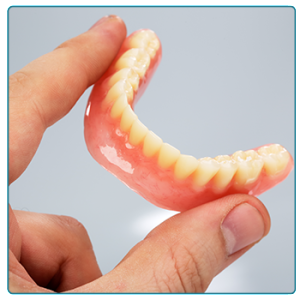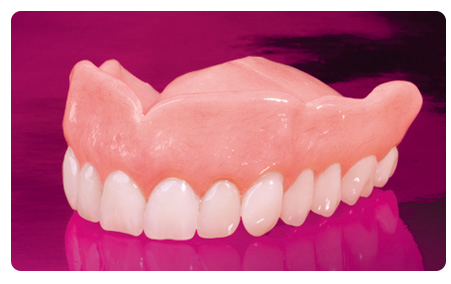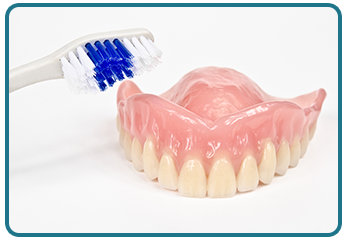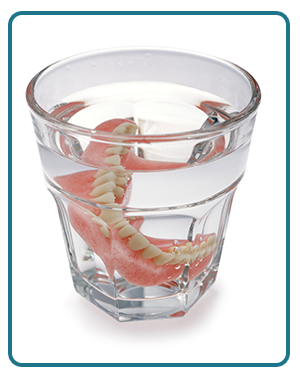 A conventional denture
A conventional denture
When all your upper or lower teeth are missing, a full denture is a good treatment for replacing them.
With proper home care and regular adjustments and relines, your denture can provide a functional bite and a natural-looking smile.
Placing a full denture
The process of making a full denture varies in each case, and it usually involves a series of appointments. The first step is to take impressions of your mouth. An accurate model is made from these impressions, and the lab uses this model to create the denture base. In many cases, a wax rim is mounted on the base for you to try in. This helps confirm the correct relationship between the upper and lower teeth.
The lab then creates a wax replica of the final denture, called a wax-up. You will try in the wax-up, and we will note any changes to the fit of the base and to the color, shape, and placement of the teeth. We then send the wax-up back to the lab, and they process it to create the final denture.
When the denture is ready, you try it in, and we make any necessary adjustments.
The benefits of a full denture
Dentures have many benefits. When your natural teeth are missing, dentures enable you to eat nutritious foods more easily and to speak more clearly. In addition, they support your lips and cheeks for a more attractive and youthful appearance.



